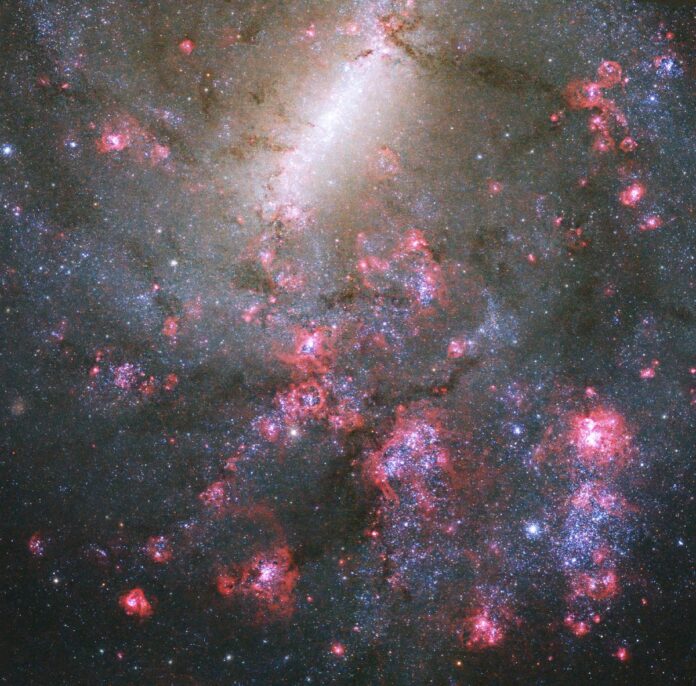
Bright pink spots and dark red spots cover the foreground of this new Hubble Space Telescope image. NGC 5068 is a globular spiral galaxy with thousands of star-forming regions and a large amount of interstellar dust.
First discovered by the British astronomer William Herschel in 1785, NGC 5068 is located in the southern part of the constellation Virgo and is about 20 million light-years away. According to astronomers, the diameter of the galaxy is 45 thousand light years.
At the top center of this image is the bright central bar of NGC 5068, a densely packed region of mature stars. A black hole hides behind the bar, pulling the stars together with its intense gravity. The bright pinkish-red spots along the bottom and sides of the image are regions of ionized hydrogen, where young star clusters are located. Although not very clear from this angle, these spots are along the galaxy’s spiral arms, where new stars typically form.
Astronomers also found at least 110 Wolf-Rayet stars in NGC 5068. Wolf-Rayet stars are a type of old, massive stars that lose mass at a very high rate. They are usually more than 25 times the mass of our Sun and a million times brighter. There are about 220 Wolf-Rayet stars in our Milky Way galaxy.
NGC 5068 is difficult to see with the human eye because it has a relatively low surface brightness. Fortunately, Hubble’s ultraviolet, visible, and near-infrared capabilities have helped capture the beauty and intrigue of this galaxy. Different space objects emit different wavelengths of light. Young and hot stars emit ultraviolet light, so Hubble uses ultraviolet observations to find them.

NASA, ESA, R. Chandar (University of Toledo) and J. Lee (STScI); Processing: Gladys Kober (NASA/Catholic University of America), DECam, Victor M. Blanco/CTIO, CSA, J. Lee, and the PHANGS-JWST team
In June 2023, the Webb Space Telescope released its own infrared image of NGC 5068 as part of a science campaign to learn more about star formation in the gaseous regions of neighboring galaxies. Many of Webb’s observations are based on previous Hubble observations, including a collection of 10,000 images of star clusters.








